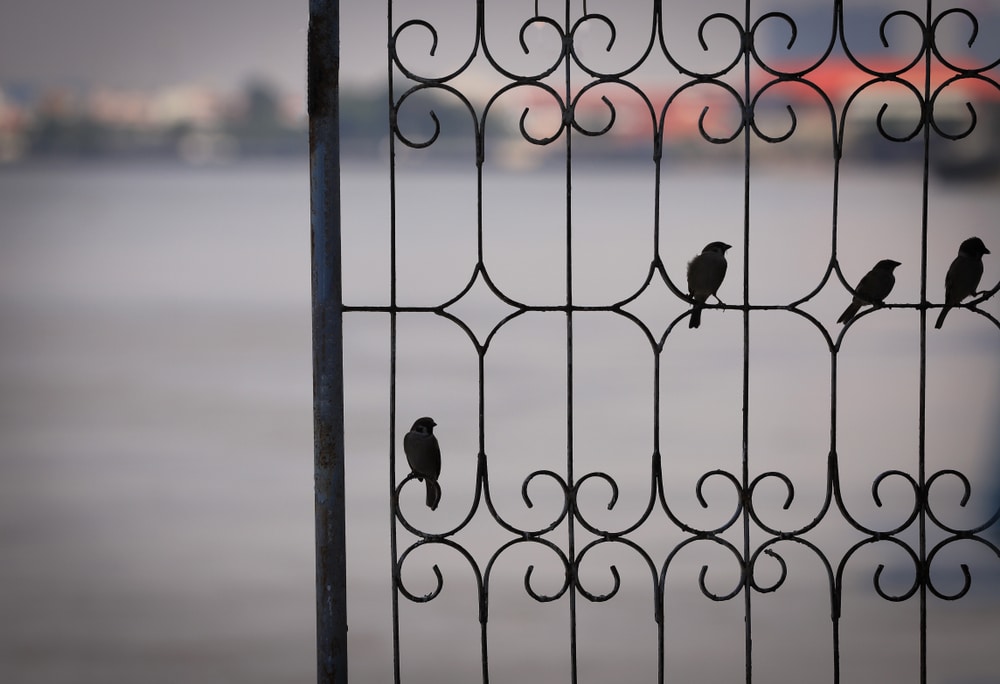
What is Bird Friendly Design and Why Does it Matter?
As humans have designed the built world around our needs, we have profoundly changed the lives of the creatures who live alongside us. From light pollution to noise pollution, to air traffic, to road traffic, any time an animal ventures forth in the world, their natural habits are interrupted by human design in a way that can be disorienting or even fatal.
There are many ways humans can and should rethink design from a non-human perspective. One way to re-imagine our impact is to design buildings that are safe for airborne creatures like birds.
Glass Buildings and Their Impact on Birds
Glass and mirrored surfaces have been a popular feature of contemporary design for years. The design imperative of using natural light has many positives, but humans haven’t fully come to terms with the impacts of these materials on the environment. Buildings with large glass areas are also more difficult to heat and cool.
The effect of glass on birds is a well-known negative. Bird collisions are the second biggest killer of birds directly caused by human intervention. This cause of death is second only to the deaths of birds due to predation by domestic cats. Birds collide with office buildings, museums, public buildings and residential homes. The biggest predictor of death due to collisions is the amount of glass in the building.
Why Do Birds Collide with Buildings?
- Birds don’t have the same depth perception as humans and are not good at judging objects straight ahead.
- Birds fly at speed and mistake surfaces reflecting trees or surfaces that appear transparent as an uninterrupted flight path.
- Birds flying at night can become disoriented by lighted buildings, because the red wavelengths from artificial light interrupt the blue wavelengths that help to activate birds’ sense of the earth’s electromagnetic fields. This may cause migrating birds to circle lighted buildings and fly into a collision course of urban buildings and objects.
How to Reduce Bird Collisions
There are a number of ways to reduce bird collisions. You can incorporate these into the design of your home or office building or you can retrofit these solutions. To help reduce bird collisions immediately you can also consider temporary solutions. Some temporary and long-term solutions include:
- Lattice structures on the outside of the buildings that warn birds they are approaching a building. These can be incorporated into the design of the building or added later. Any deterrent used as a barrier between birds and a reflective surface should follow the “2X4” rule. Most songbirds will not attempt to fly through horizontal spaces smaller than 2 inches high or vertical spaces 4 inches wide.
- UV patterns on glass. Birds have sensitive UV perception, so glass that incorporates UV patterns invisible to the human eye can deter many birds from colliding with it.
- Patterns printed on the outside of glass. Patterns printed on the outside of glass following the 2X4 rule can help to reduce bird collisions.
- Window films, decals and tapes. Window films applied to the outside of glass can increase privacy and reduce bird collisions. As short-term solutions, decals and tapes can help home-owners and others reduce bird collisions immediately by preventing birds from flying into them.
- Most bird collisions happen during the day but night-time collisions can be prevented by switching off lights, particularly during birds’ migratory seasons. Switching off lights in a home and office building has the added benefit of reducing energy consumption.
If you are concerned about the wellbeing of birds when designing your home or office, or if you want to know how to make your dwelling bird friendly the biophilic design consultants at Earth Science Design can assist you with solutions to reduce the impact of your home on the bird population.
We have committed ten years of research into the science of biophilic design and green interior design. There are many solutions to protect birds that you can implement immediately. There are also long-term solutions for integration into your environment. Ecosystem integration consultation for your home design or office design can help you live in harmony with nature, especially if your building is situated in a delicate ecosystem. We have offices in La Jolla CA, and are available for remote and in-person consultations as needed. Please contact us to learn more about our ecosystem consultation and La Jolla biophilic design services.

